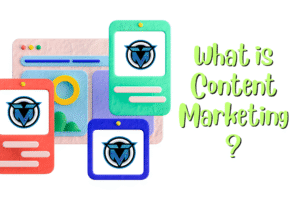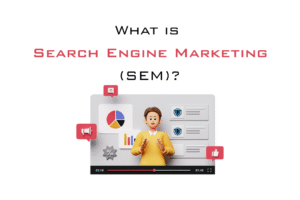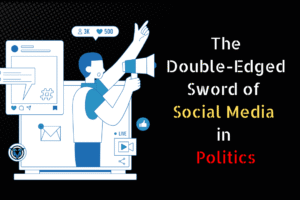📌Video media refers to the use of moving visuals, often accompanied by audio, to convey messages, ideas, emotions, or information. It encompasses all content that is delivered in a video format—whether recorded, animated, or live-streamed.
Video media can be found across multiple platforms, including:
- Television
- Cinema
- Social media
- Streaming services (YouTube, Netflix)
- Educational portals
- Corporate websites
It has become an integral part of modern communication, offering a dynamic, visual, and often more memorable alternative to text or static images.
🕰️ The Evolution of Video Media
Video media has come a long way from its early beginnings:
1. Early 1900s – Silent Films
Video started with black-and-white silent films. These visual stories relied on expressions, actions, and captions to tell a story.
2. 1930s – Talkies and Color Films
The invention of synchronized sound brought life to videos, followed by the introduction of color.
3. 1950s–1970s – Television Boom
Television became a household item, broadcasting news, shows, and commercials.
4. 1980s–1990s – VHS and Cable TV
VHS tapes, cable channels, and home video recording transformed video consumption.
5. 2000s – Digital and Online Video
The internet revolutionized video with platforms like YouTube (launched in 2005).
6. 2010s–2020s – Social Media and Mobile Video
Short-form videos, live streaming, and mobile-optimized content took center stage with platforms like TikTok, Instagram, and Facebook.
🎞️ Types of Video Media
There are various types of video media used for different purposes. Some major formats include:
1. Live Action
Footage captured in real time, involving people, places, or objects. Common in movies, interviews, vlogs, and tutorials.
2. Animation
Cartoons or digitally drawn videos used in storytelling, education, and advertising.
3. Live Streaming
Broadcasting video content in real-time on platforms like Twitch, YouTube Live, and Facebook Live.
4. Explainer Videos
Short videos used to explain a concept, product, or service—often used in digital marketing.
5. Documentaries
Non-fiction video content focused on real-life events, people, or issues.
6. Webinars & Online Courses
Educational video formats that offer instruction, training, or learning experiences.
⚙️ How Does Video Media Work?
Video media works by displaying a sequence of images (frames) in quick succession, creating the illusion of movement, typically at 24 to 60 frames per second (fps). The process involves several stages:
1. Creation
Video content is created using cameras, smartphones, or software tools. This includes filming, animation, voiceover, and sound recording.
2. Editing
Raw footage is refined using video editing software like Adobe Premiere, Final Cut Pro, or DaVinci Resolve. Editing involves cutting clips, adding effects, transitions, text, and syncing audio.
3. Encoding & Compression
Videos are encoded into formats like MP4, MOV, or AVI and compressed to reduce file size without significant quality loss, making them easier to stream or download.
4. Distribution
Videos are uploaded to platforms like YouTube, Vimeo, or embedded in websites. They can be shared via social media, emails, or apps.
5. Playback
Users watch videos on devices such as smartphones, computers, TVs, or tablets. Streaming services deliver videos in real-time using adaptive bitrate technology to match the user’s internet speed.
📈 Importance of Video Media in Today’s World
In 2025, video is king. According to Cisco, video content accounts for over 80% of global internet traffic. Here’s why it’s so vital:
- Highly Engaging: Video content captures attention more effectively than text or images.
- Emotional Connection: Combines visual and auditory elements to evoke emotions.
- Easier to Understand: Demonstrates complex ideas in a simple, visual way.
- Shareable: Videos are more likely to be shared on social platforms.
- Memorable: Viewers retain 95% of a message when it’s in video format.
✅ Benefits of Using Video Content
🔹 In Education
- Makes learning more interactive and effective
- Enhances memory retention
- Great for remote learning and tutorials
🔹 In Business
- Drives brand awareness and credibility
- Enhances customer engagement
- Boosts conversions on product pages
🔹 In Marketing
- Improves SEO performance
- Increases dwell time on websites
- Encourages social sharing
🔹 In Entertainment
- Offers immersive storytelling
- Reaches global audiences instantly
📣 Role of Video Media in Digital Marketing
Video media has transformed the digital marketing landscape. Brands now use video to build trust, inform, entertain, and convert.
Key Uses in Marketing:
- Product Demos: Showcase how a product works
- Customer Testimonials: Build social proof
- Behind-the-Scenes: Humanize your brand
- Tutorials & How-Tos: Provide value to the audience
- Ads and Promotions: Grab attention on social feeds
Video Platforms for Marketing:
- YouTube
- Facebook Watch
- Instagram Reels
- TikTok
- LinkedIn Video
- Pinterest Video Pins
🚀 Emerging Trends in Video Media (2025)
Video media continues to evolve rapidly. Here are the biggest trends in 2025:
1. Short-Form Video Dominance
TikTok, Instagram Reels, and YouTube Shorts are leading platforms for viral content.
2. Interactive Videos
Clickable elements allow viewers to choose what happens next, ideal for training and storytelling.
3. AI-Powered Video Creation
Tools like Runway and Pictory use AI to generate scripts, visuals, and edits automatically.
4. 360° and VR Videos
Immersive video experiences are gaining popularity in gaming, tourism, and education.
5. Silent Videos with Captions
Many users watch videos without sound—captions are essential for accessibility and engagement.
⚠️ Challenges in Video Media
While video content offers many benefits, it also comes with its challenges:
- High Production Cost (especially for professional-grade videos)
- Large File Sizes (requires faster internet and storage)
- Time-Consuming (editing and post-production can be lengthy)
- Copyright Issues (using licensed music or clips can lead to penalties)
- Viewer Attention Span (videos must hook viewers in the first few seconds)
🧠 Best Practices for Effective Video Media
- 🎯 Know Your Audience: Tailor video content to meet the needs of your target demographic.
- ⏱️ Keep It Concise: Aim to deliver your message quickly and clearly.
- 📱 Optimize for Mobile: Ensure your videos are responsive and easily viewable on mobile devices.
- 🔠 Use Captions: Improve accessibility and viewer retention.
- 🧪 Test & Analyze: Use analytics to evaluate video performance and adjust strategies accordingly.
- 🌐 SEO for Videos: Use keywords in titles, descriptions, and tags to improve search rankings.
📝 Final
Video media is more than just a visual format—it’s a powerful storytelling and marketing tool that connects with audiences in profound ways. Whether you’re a content creator, educator, business owner, or marketer, leveraging video media can elevate your communication, boost your reach, and enhance your brand presence.
As we move deeper into 2025, the role of video in digital strategy is only going to grow. Embrace this medium with creativity, consistency, and a clear understanding of your goals to unlock its full potential.













